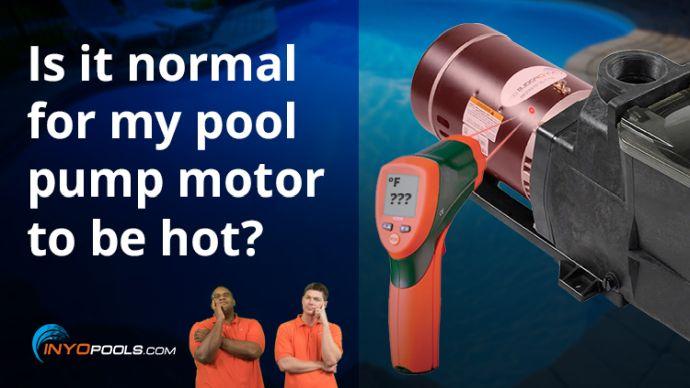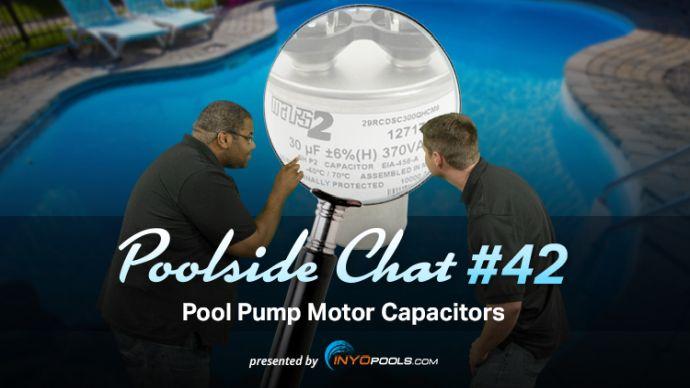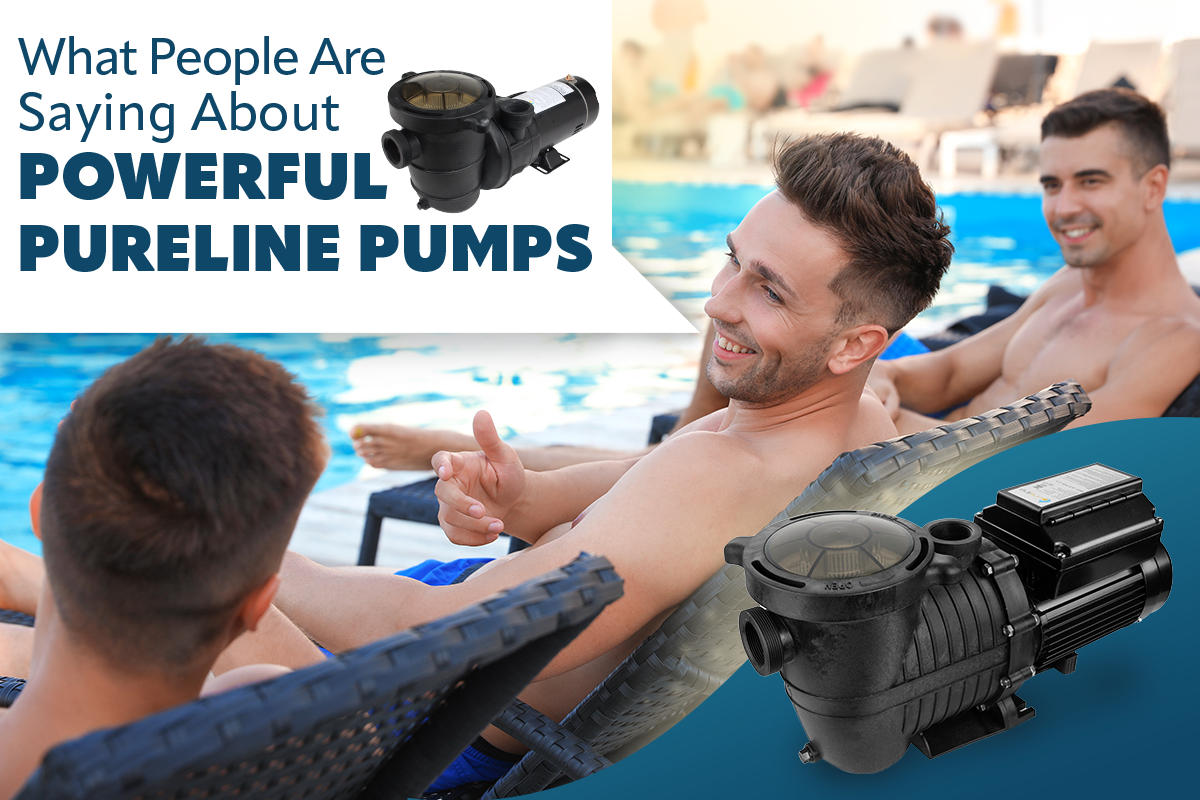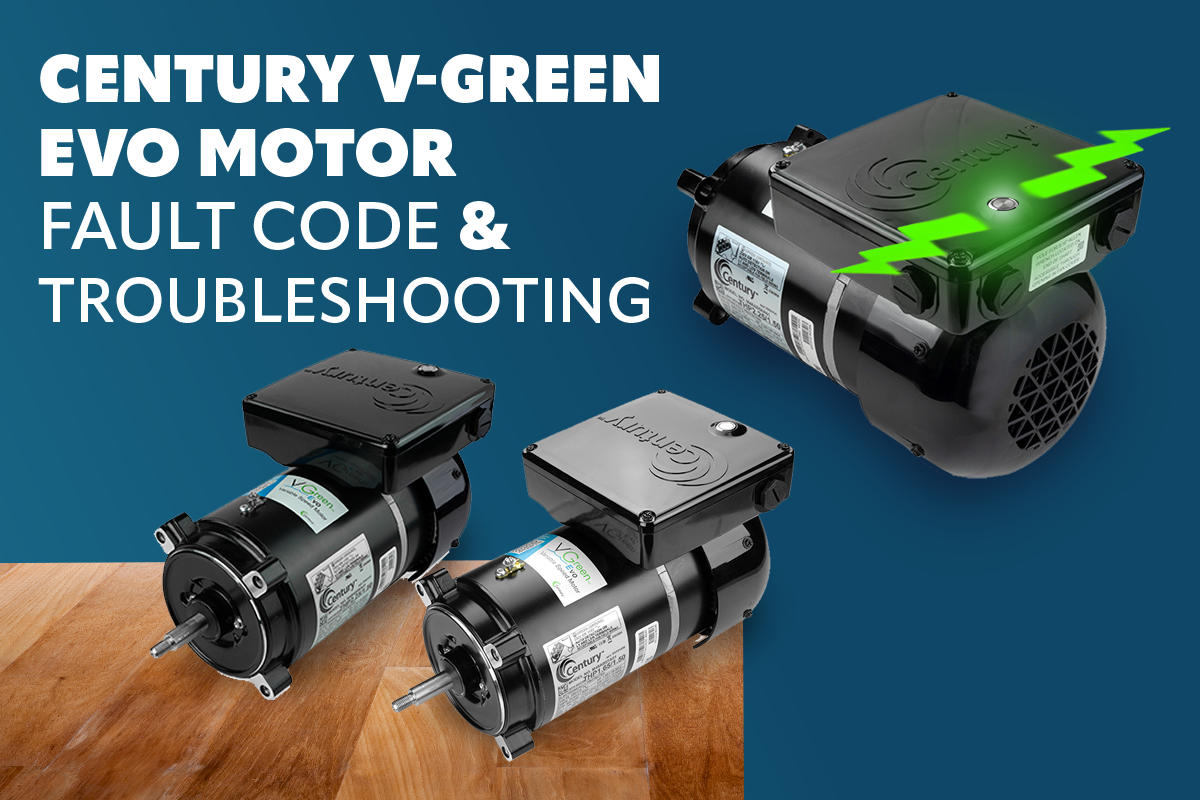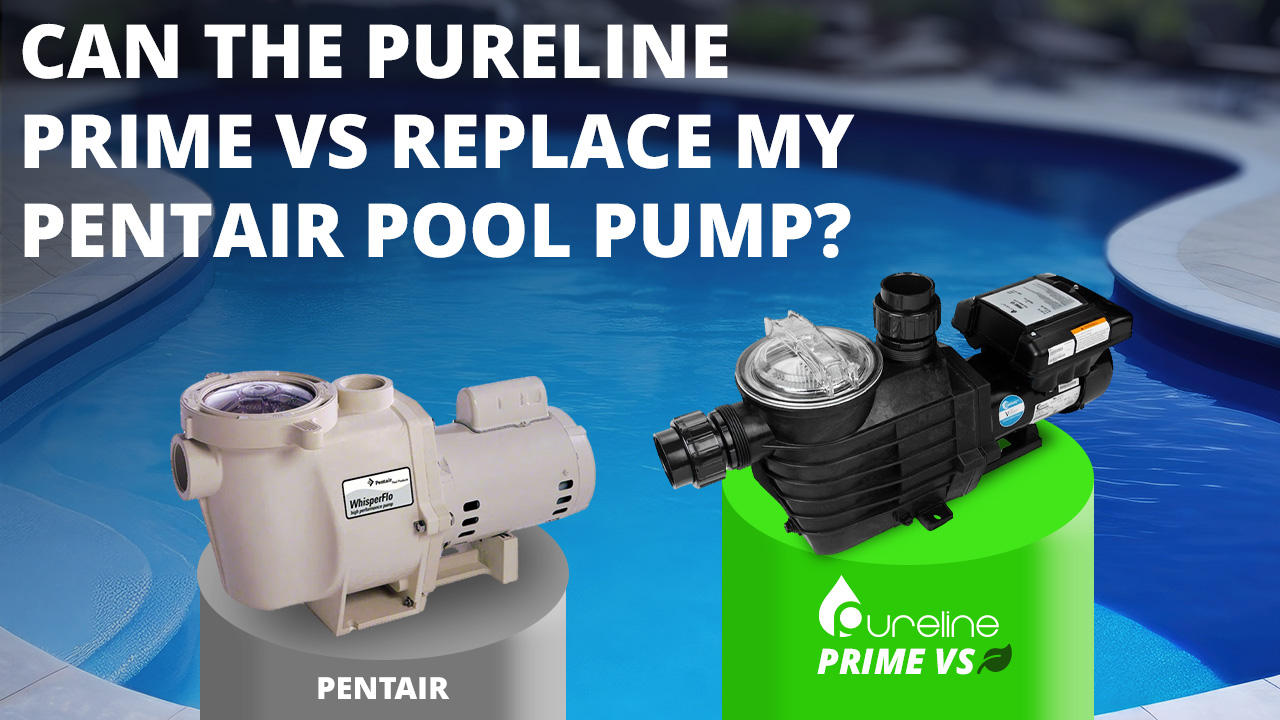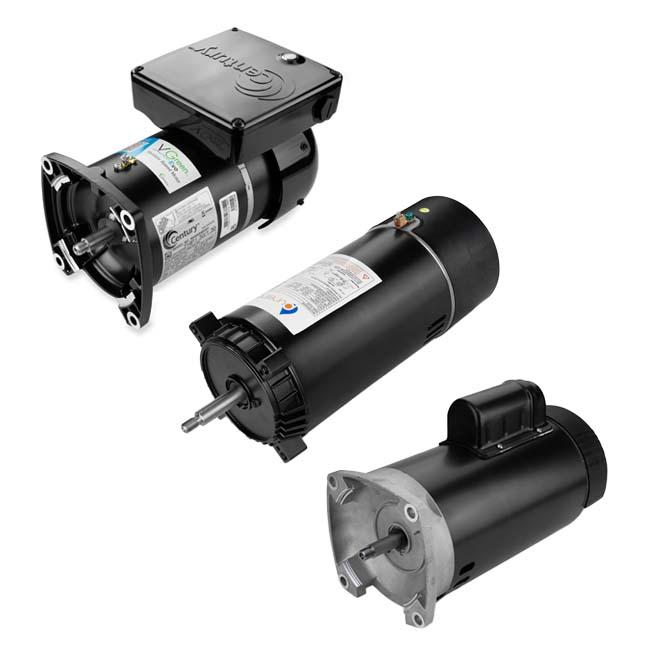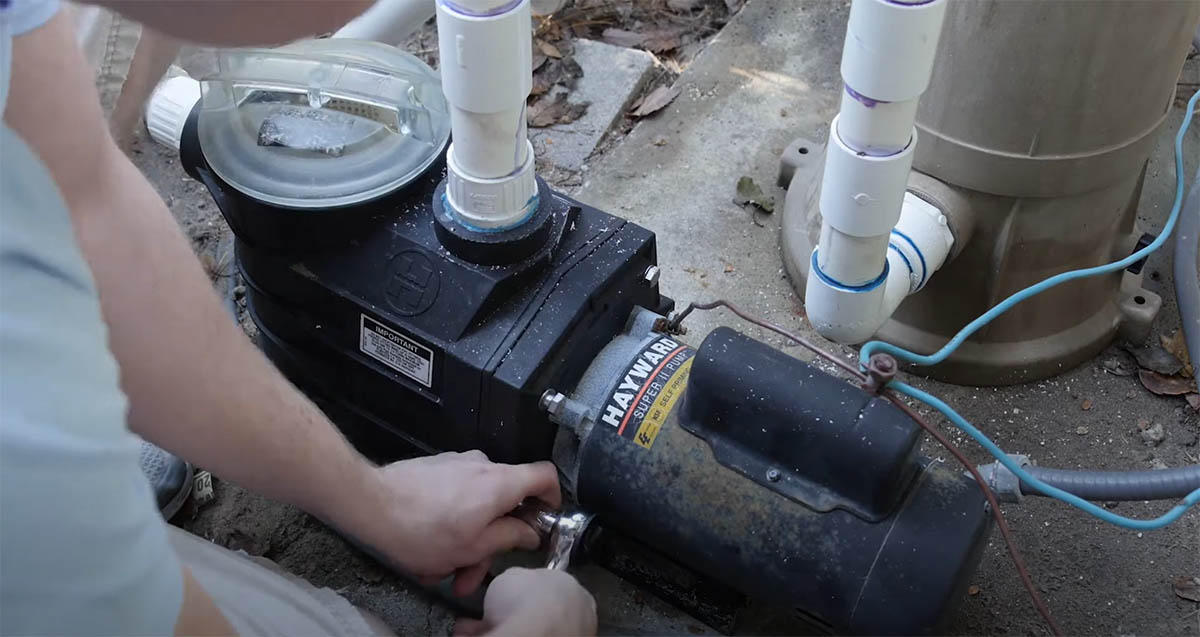
Pool Pump Troubleshooting
Resources for fixing your pool pump problems.

Tip: Proper maintenance of your pool pump is crucial for keeping your pool clean and ensuring the longevity of your equipment. Regular upkeep helps prevent costly repairs and maintains efficient water circulation, essential for a healthy swimming environment.
Common Pump Problems
Click on a symptom that you are experiencing…
Motor Not Running
Problem:
A pool pump motor that won’t start can disrupt the pool’s circulation, leading to stagnant water and potential algae growth. Common causes include power issues, faulty components, or mechanical failures in the motor.
Action Items:
- Check the Power Supply: Ensure that the pump is securely plugged in and that the breaker has not tripped. Reset the breaker if necessary, and verify that the outlet has power by testing it with another device.
- Inspect the Timer or Automation System: If your pump is connected to a timer or an automation system, make sure the timer is set correctly and functioning. Sometimes, timers can fail or become misaligned, preventing the pump from turning on.
- Examine the Motor’s Wiring and Connections: Check for any loose, corroded, or damaged wires connecting the motor to the power source. If you notice any damage, consider hiring a qualified technician to replace or repair the wiring.
- Test the Capacitor: The start capacitor helps the motor kick on, and if it fails, the motor may not run. Use a multimeter to test the capacitor or consult a professional for inspection. Replacing a faulty capacitor can often resolve motor start issues.
- Inspect the Motor’s Bearings: Worn-out bearings can cause the motor to seize up and fail to run. Listen for unusual sounds or attempt to manually rotate the motor shaft (with the power off). If it doesn’t move freely, it may need bearing replacement or lubrication.
- Clean or Replace the Impeller: A clogged or jammed impeller can prevent the motor from running by causing resistance. Open the pump housing and remove any debris from the impeller to restore functionality.
- Evaluate for Overheating Issues: Some motors have a thermal overload switch that will prevent operation if the motor overheats. Allow the motor to cool and try restarting it. Check for ventilation issues that could be causing overheating.
Helpful Resources:
Motor Making Loud Noise
Problem:
A noisy pool pump motor can indicate several underlying issues, such as worn bearings, cavitation, or debris within the impeller. Ignoring these sounds can lead to motor failure, so it’s essential to identify the cause early.
Action Items:
- Check for Debris in the Impeller: Debris, such as leaves or small rocks, can get trapped in the impeller, causing rattling or grinding sounds. To clean the impeller, turn off power to the pump, open the pump housing, and inspect the impeller for blockages.
- Inspect Motor Bearings: Over time, motor bearings can wear out or become damaged, leading to a loud, high-pitched squealing sound. This is especially common in older pumps. Replacing bearings usually requires disassembly and specialized tools, so consulting a professional may be beneficial.
- Ensure Proper Water Flow (Avoid Cavitation): Cavitation occurs when there’s an issue with water flow, creating a loud “gravel” sound in the pump. This can happen if there’s a blockage in the intake line, a closed valve, or low water levels in the pool. Check for any restrictions in the water flow to reduce cavitation.
- Examine the Pump’s Mounting Base: If the pump is loosely secured to its base, vibrations can cause a rattling or buzzing sound. Make sure the mounting bolts are secure, and consider adding a rubber pad underneath the pump to reduce noise.
- Inspect for Loose or Worn Parts: Other internal components, like the diffuser or pump seal plate, may become loose or worn over time, causing additional noise. Regular inspection and maintenance can help identify these issues early.
Helpful Resources:
Water Dripping From Pump
Problem:
Water leaking from a pool pump can signal various issues that, if left unchecked, may lead to more significant damage or efficiency loss. Leaks often stem from worn-out seals, cracked housings, or improper fittings.
Action Items:
- Inspect the Pump Housing and Lid O-Ring: Check if the pump lid is sealed tightly and the O-ring is in good condition. If the O-ring appears cracked, flattened, or brittle, replacing it can often stop leaks.
- Check the Shaft Seal: The pump’s shaft seal prevents water from leaking between the motor and the wet end of the pump. Over time, these seals wear out and can lead to leaks around the motor area. Replacing the shaft seal typically requires some disassembly, so consult a guide or professional if needed.
- Tighten All Connections and Fittings: Loose fittings on the intake and discharge ports can cause water to drip from the pump. Ensure all connections are properly tightened but avoid over-tightening, which can crack plastic parts.
- Examine the Drain Plugs: Most pool pumps have drain plugs for winterization, which may leak if they’re loose or if the O-rings inside have degraded. Tighten the plugs or replace the O-rings as necessary.
- Look for Cracks in the Pump Housing: Cracks in the pump housing or wet end can lead to leaks and may worsen over time. Small cracks can sometimes be patched temporarily, but replacing the housing is usually the best long-term solution.
- Check for Proper Installation on the Base: If the pump is not level or firmly supported, vibrations can cause fittings to loosen and leak over time. Reposition the pump on a stable base if necessary.
Helpful Resources:
Pump Not Filling With Water
Problem:
When a pool pump isn’t filling with water, or “priming,” it can’t circulate water effectively, which prevents filtration and chemical distribution. This issue can arise from air leaks, clogged lines, or low water levels, among other causes. Addressing these problems promptly can help avoid pump damage.
Action Items:
- Check Water Levels in the Pool: Ensure that the pool’s water level is high enough to cover the skimmer opening fully. If the water is too low, the pump can’t draw in water properly. Fill the pool to the recommended level if needed.
- Inspect and Tighten the Pump Lid O-Ring: If there’s an air leak around the pump lid, it can prevent the pump from filling. Check the lid’s O-ring for cracks or wear, and apply a silicone-based lubricant if it’s dry. Tighten the lid securely to maintain an airtight seal.
- Clear Any Clogs in the Skimmer or Suction Lines: Debris in the skimmer basket or blockages in the suction line can restrict water flow to the pump. Clean out the skimmer basket, pump strainer basket, and any clogged lines to improve water flow.
- Prime the Pump Manually: If the pump loses its prime, try manually priming it by filling the pump basket with water, securing the lid, and restarting the pump. This can help initiate water flow and resolve the issue.
- Examine the Pump Basket and Impeller for Blockages: Remove and clean the pump basket and inspect the impeller for obstructions. Debris caught in the impeller can prevent water from flowing through the pump properly.
Helpful Resources:
Low Water Pressure
Problem:
Low water pressure in a pool pump can indicate various underlying issues, often involving blockages, leaks, or equipment malfunctions. When the pump isn’t producing adequate pressure, water circulation suffers, leading to poor filtration and potential chemical imbalance.
Action Items:
- Inspect and Clean the Pump and Skimmer Baskets: Debris buildup in the pump or skimmer baskets can obstruct water flow, reducing pressure. Empty these baskets regularly to keep the system clear.
- Check for Clogs in the Filter or Pipes: Blockages in the filter or plumbing lines can restrict water flow, affecting pressure. Inspect the filter for clogs and backwash it if necessary. If you suspect a pipe blockage, consult a professional for clearing options.
- Examine the Pump Lid and Seal for Air Leaks: Air leaks around the pump lid or other fittings can prevent the pump from building proper pressure. Check the lid O-ring for wear or cracks, apply a silicone-based lubricant if it’s dry, and ensure a tight seal.
- Verify Water Levels in the Pool: If the pool water level is too low, the pump may draw in air instead of water, reducing pressure. Maintain the water level above the skimmer opening.
- Inspect the Impeller for Debris: A clogged impeller can prevent the pump from generating adequate pressure. Turn off the pump, remove the basket, and check the impeller for any debris that may be lodged inside.
Helpful Resources:
Pump Videos
Pump Articles

Replacement Motors
- Single, Dual, Variable Speed Options
- Confirm the right replacement with our Experts.
- Fast Free Shipping.

